ANIMALS
Beyond the Stripes: 25 Intriguing Zebra Facts That’ll Amaze You
Published
1 month agoon

Shutterstock
Zebras are some of the most fascinating and recognizable animals in the animal kingdom, thanks to their eye-catching black-and-white stripes. But beyond their unique appearance lies a world of intriguing behaviors, survival tactics, and surprising characteristics. From their powerful kicks to their impressive migratory journeys, zebras have evolved with remarkable adaptations to thrive in Africa’s diverse landscapes. Whether you’re curious about their social bonds, natural camouflage, or little-known abilities, these striped equines are far more complex than they appear. Join us as we uncover 25 captivating facts about zebras that will make you appreciate these animals like never before.
Three Distinct Species
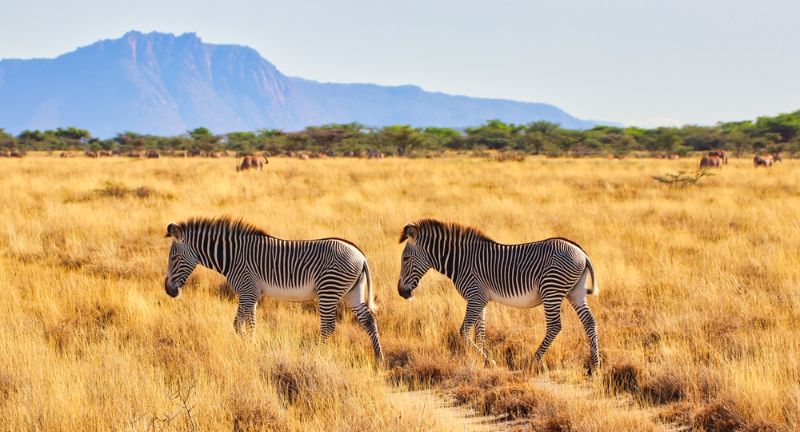
Shutterstock
There are three main species of zebras that roam the African landscapes: the Plains zebra, the Mountain zebra, and Grevy’s zebra. Each species has adapted to its specific environment, from grassy savannas to rocky mountain slopes. Plains zebras are the most common, known for their bold black-and-white stripes. Grevy’s zebras are the largest and most endangered, while Mountain zebras are skilled climbers with special hooves for navigating rough terrain.
Unique Stripes
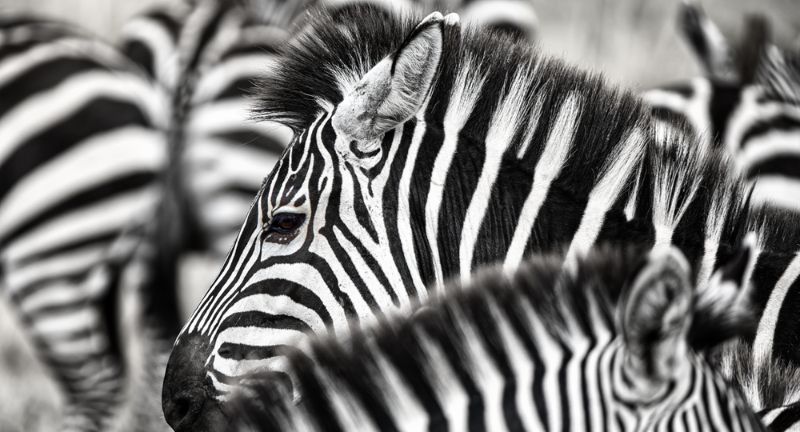
Shutterstock
No two zebras have the same stripe pattern, making each individual uniquely identifiable. These stripes are as distinct as human fingerprints, helping zebras recognize one another within their herds. The patterns can also vary depending on the species, with Grevy’s zebras having narrower stripes and Mountain zebras sporting a grid-like pattern. This individuality plays a crucial role in social bonding and mother-offspring recognition.
Black or White?
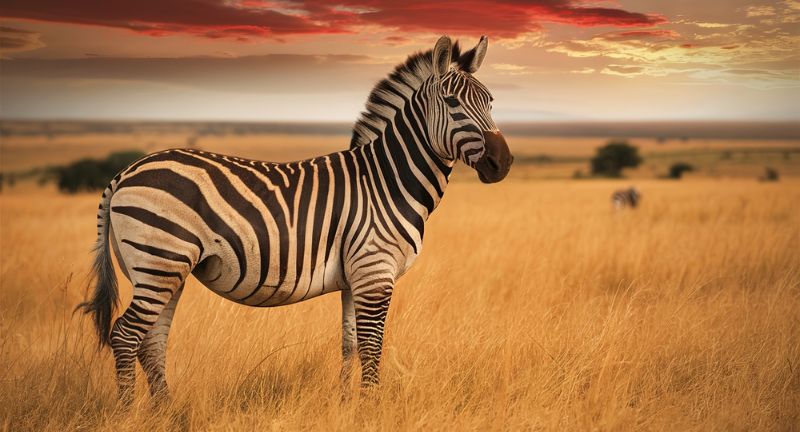
Shutterstock
Despite appearances, zebras have black skin underneath their fur, with white stripes forming the patterns we see. Scientists have determined that zebras are technically black with white markings rather than the other way around. This unusual pigmentation may have evolved as a survival adaptation to confuse predators and regulate body temperature. The black areas absorb heat in the morning, while the white stripes reflect sunlight during hotter parts of the day.
Striped Camouflage
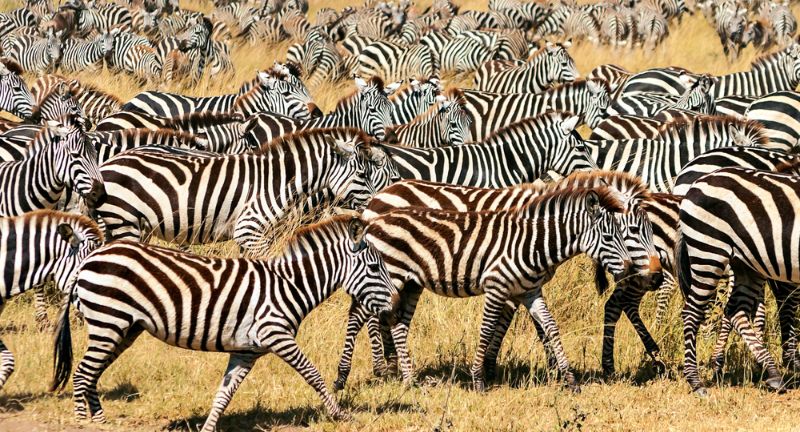
Shutterstock
Zebra stripes act as a natural camouflage when they move together as a herd. The contrasting stripes create an optical illusion known as “motion dazzle,” making it difficult for predators like lions to single out an individual zebra. The stripes can also help zebras blend into tall grasses when standing still. This evolutionary trick helps protect them from predators that rely heavily on visual cues for hunting.
Cooling Effect
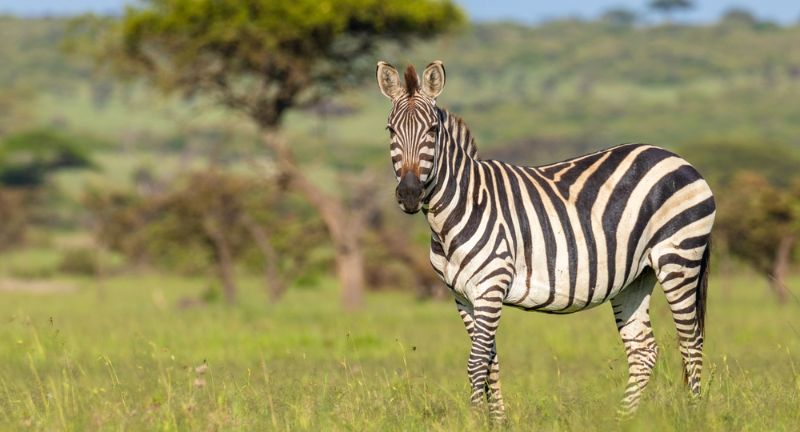
Shutterstock
The stripes of a zebra might also serve as a natural air-conditioning system. Research suggests that the differing colors create small convection currents that help cool the animal’s body. The black stripes absorb heat, warming the air and causing it to rise, while the white stripes reflect heat, cooling the skin underneath. This mechanism helps zebras cope with the intense African heat, particularly during the hot midday hours.
Fast Runners
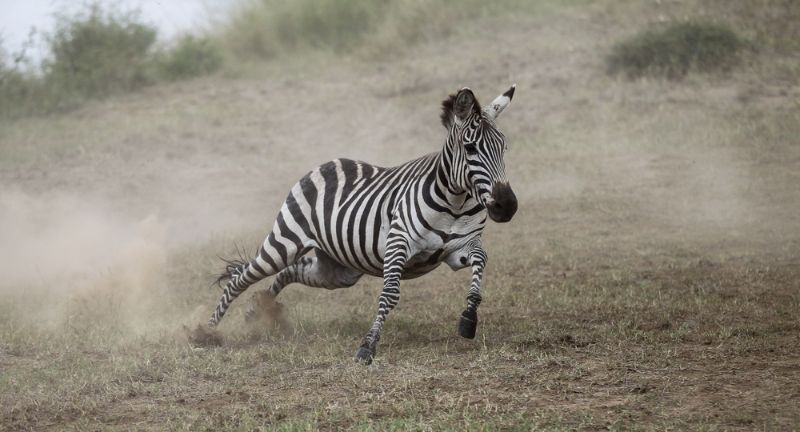
Shutterstock
Zebras are surprisingly fast runners, capable of reaching speeds of up to 65 km/h (40 mph). This speed helps them escape predators like lions and hyenas that hunt by chasing their prey. Zebras use zig-zag movements while running, which makes it harder for predators to predict their next move. Their strong legs and powerful muscles provide them with the stamina needed for short bursts of high-speed travel.
Kicking Defense
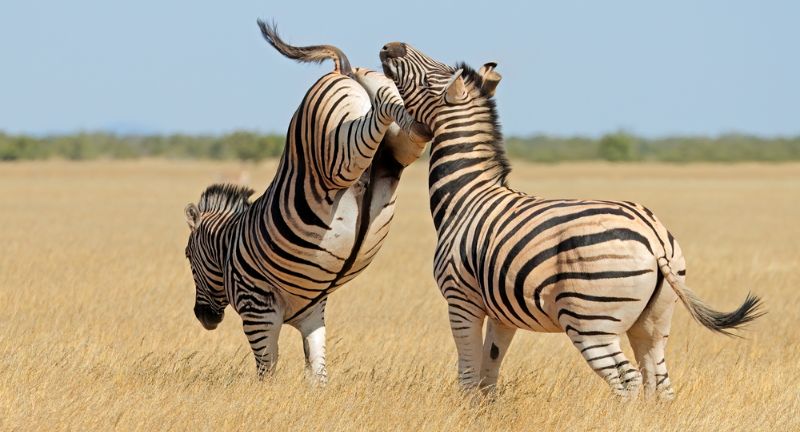
Shutterstock
A zebra’s kick is one of its best defenses against predators. Their powerful legs can deliver a forceful kick strong enough to shatter a lion’s jaw or kill a smaller predator outright. Zebras are highly protective of their young and won’t hesitate to use their kicks if they feel threatened. This strength, combined with their agility, makes them formidable opponents despite their herbivorous nature.
Excellent Hearing
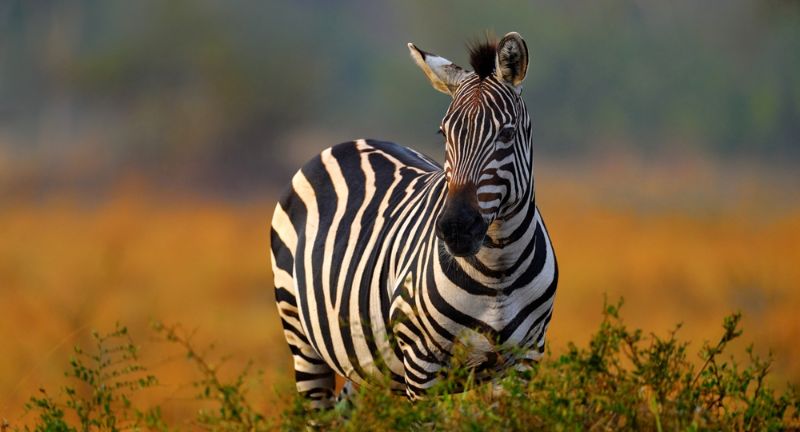
Shutterstock
Zebras have excellent hearing, thanks to their large, cup-shaped ears. Their ears can rotate independently, allowing them to detect sounds from multiple directions simultaneously. This ability helps them remain alert to potential predators like lions, even when grazing. Their sharp auditory senses are critical in the wild, where survival often depends on early detection of threats.
Strong Social Bonds
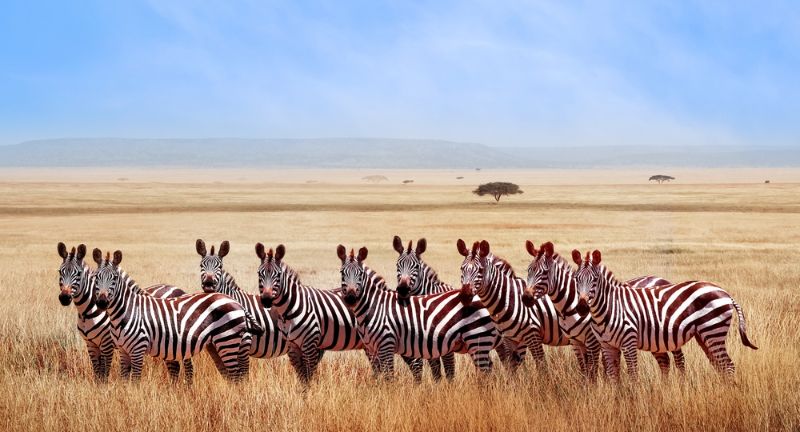
Shutterstock
Zebras are highly social animals, with Plains zebras typically living in family groups called harems. A harem consists of a dominant male, several females, and their offspring. These strong social bonds provide protection against predators and foster cooperation within the group. If one member is injured, others will often stay behind to protect them from danger.
Migratory Travelers
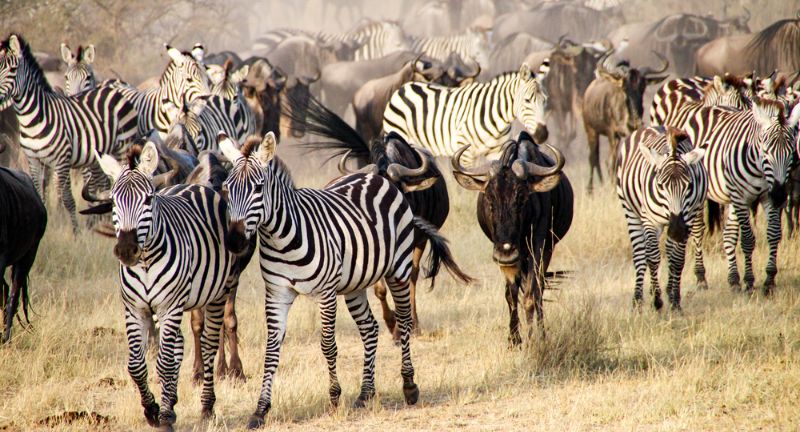
Shutterstock
Zebras are known for their long migrations, traveling vast distances in search of food and water. In East Africa, zebras join wildebeests in the Great Migration, covering over 1,800 miles annually. These journeys are fraught with danger, as predators often lie in wait along migration routes. Despite the risks, migration ensures their survival by helping them find new grazing lands as seasons change.
Grevy’s Zebra Endangered
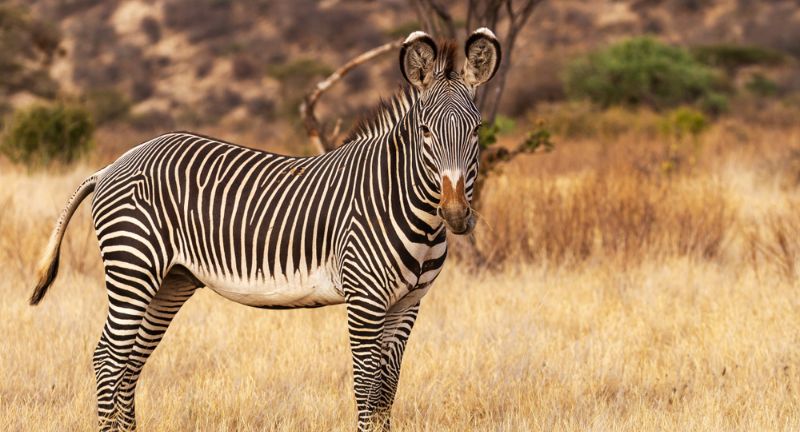
Shutterstock
The Grevy’s zebra, the largest zebra species, is sadly listed as endangered. Habitat loss, competition with livestock, and hunting have caused their population to plummet to fewer than 3,000 individuals. Unlike other zebra species, Grevy’s zebras have narrower stripes and larger ears. Conservation efforts are ongoing to protect these majestic animals and restore their population numbers.
Mountain Zebra Climbers
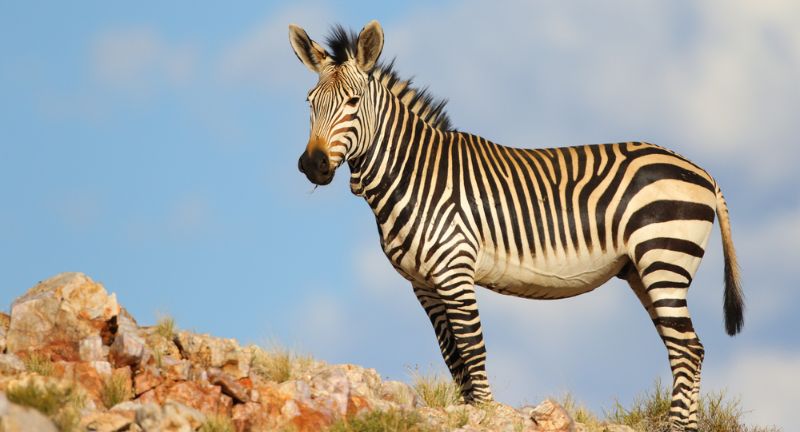
Shutterstock
Mountain zebras have specialized hooves designed for navigating steep, rocky terrain. Their tough, concave hooves provide excellent grip and balance in their mountainous habitats. This adaptation allows them to traverse slopes and cliffs that would challenge other animals. As a result, mountain zebras are often found at higher elevations where few predators venture.
Communication through Sounds
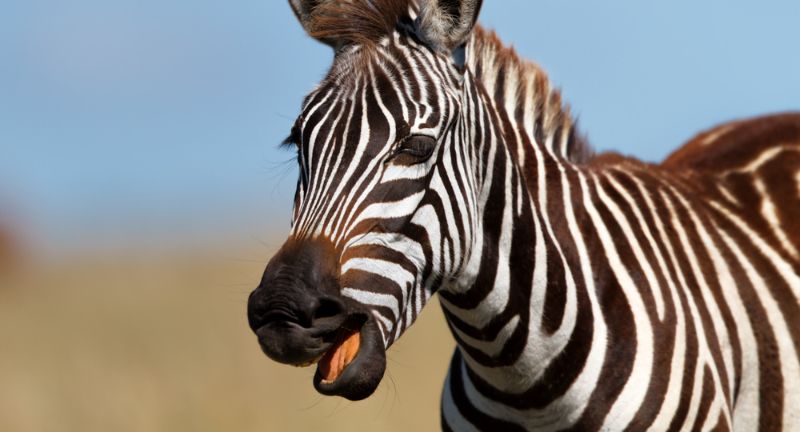
Shutterstock
Zebras use a variety of vocalizations to communicate with one another. They produce barks, whinnies, and brays to alert others to danger, call to their young, or express distress. Each sound has a specific meaning that helps maintain group cohesion. These communication skills are essential in the wild, where coordination and teamwork can mean the difference between survival and predation.
Vertical Pupils
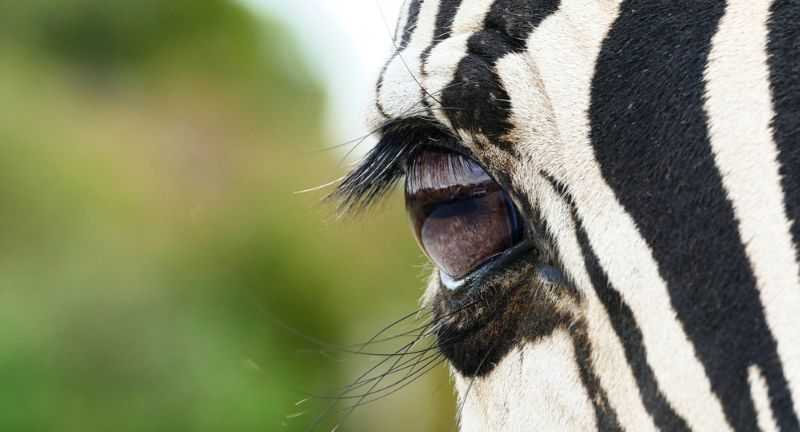
Shutterstock
Zebras have horizontally elongated pupils, giving them an expansive field of vision. This eye shape allows them to detect movement from potential predators across wide landscapes. They can see in color but have difficulty distinguishing certain hues, such as orange and red. Despite this limitation, their wide-angle vision helps them stay alert to danger even while grazing.
Herbivorous Diet
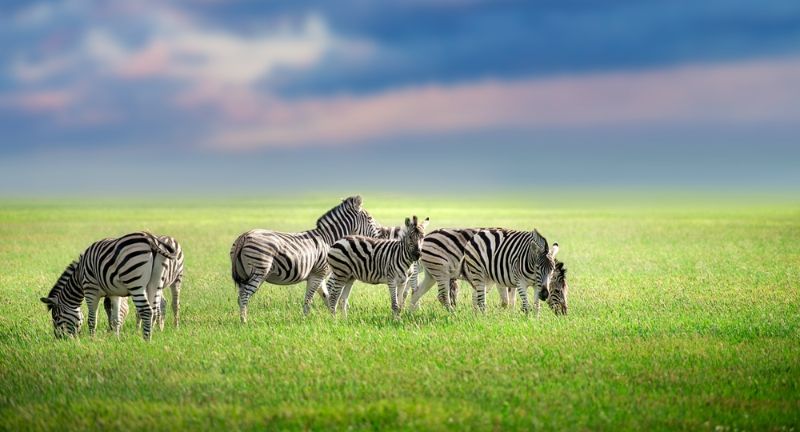
Shutterstock
Zebras are herbivores, relying primarily on grasses for their diet. They use their strong, flat teeth to grind down fibrous plants, making digestion easier. In addition to grass, they occasionally eat leaves, bark, and shrubs, especially when resources are scarce. This plant-based diet provides the energy they need to travel long distances across the African savanna.
Strong Family Loyalty
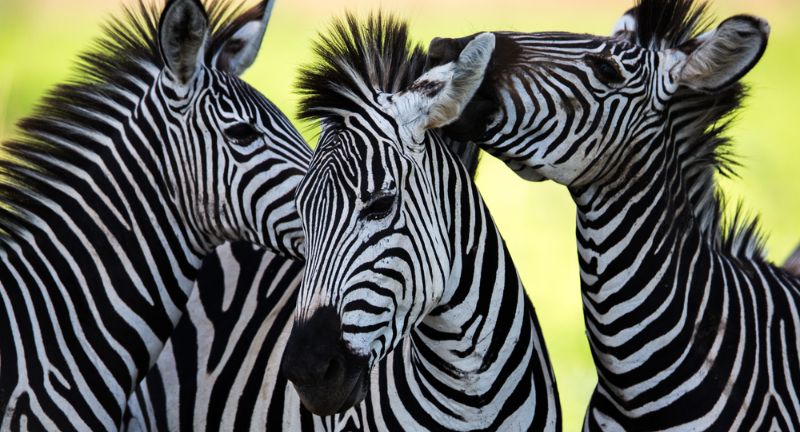
Shutterstock
Zebras exhibit remarkable family loyalty, often risking their own safety to protect a herd member. When a predator attacks, zebras may form a protective circle around the injured or young members. This social behavior helps strengthen bonds within the group and ensures greater survival success. The dominant stallion plays a key role in defending the herd against potential threats.
Long Gestation
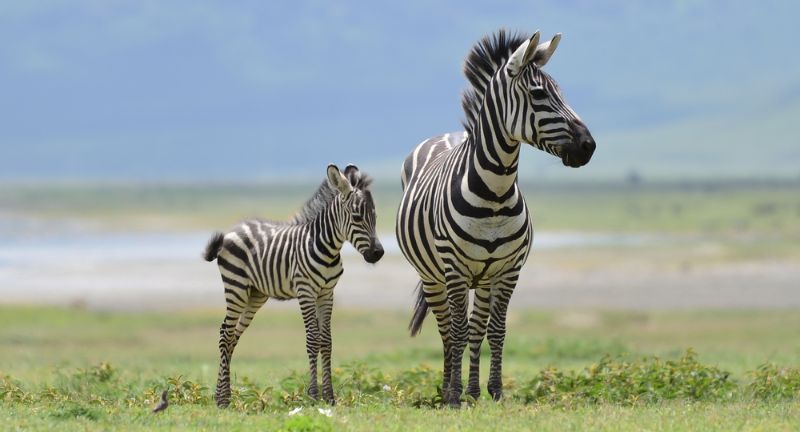
Shutterstock
Zebra pregnancies last between 12 to 14 months, depending on the species. This long gestation period ensures the birth of well-developed foals that can stand and run shortly after birth. Plains zebras typically give birth to a single foal, which the mother immediately recognizes by its unique stripe pattern. The extended pregnancy also helps foals develop the strength and survival skills necessary for life in the wild.
Foals Walk Quickly
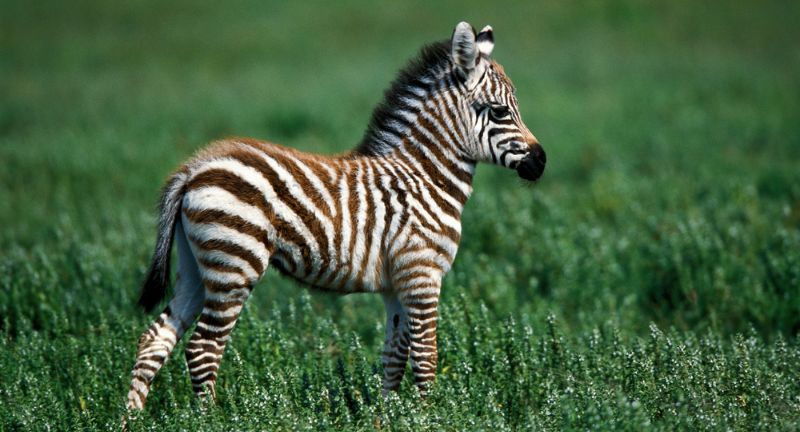
Shutterstock
Zebra foals can stand, walk, and even run within just a few hours of birth. This ability is crucial in environments where predators like lions and hyenas pose constant threats. Foals stay close to their mothers, learning to recognize her scent, sound, and stripe pattern. The early development of mobility helps increase their chances of survival in the wild.
Memory Skills
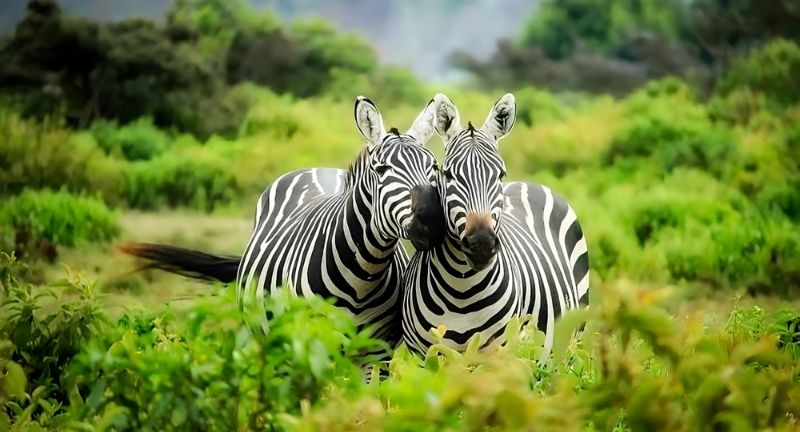
Shutterstock
Zebras have excellent memories, allowing them to recognize herd members even after extended separations. This ability is especially useful during migrations when herds sometimes intermingle. Their memory also helps them recall water sources and safe pathways across the savanna. The social bonds they form are strengthened by this impressive cognitive skill.
Swimmers Too
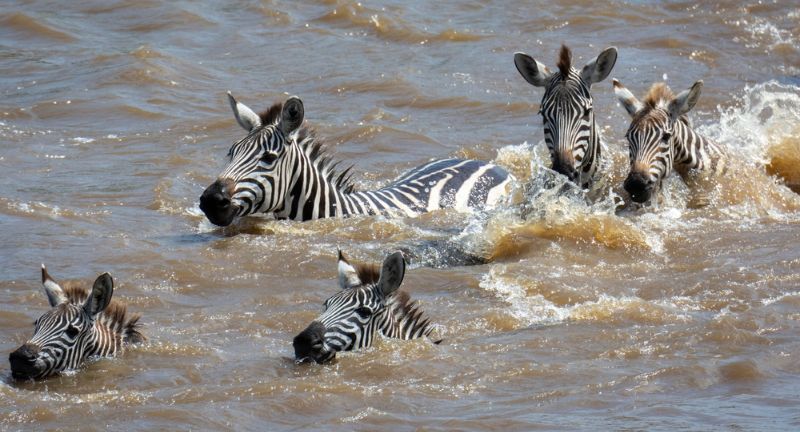
Shutterstock
Although zebras are terrestrial animals, they can swim when needed. Their powerful legs and buoyant bodies allow them to cross rivers during migration. When swimming, zebras rely on their instinct to paddle while keeping their heads above water. While they don’t swim recreationally, this skill proves essential when navigating through seasonal waterways.
Hybrid Potential
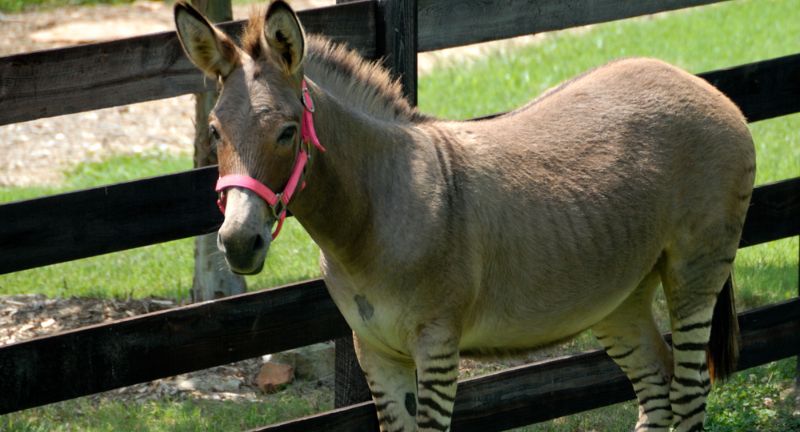
Shutterstock
Zebras can mate with horses and donkeys, resulting in hybrids such as zorses (zebra-horse) and zonkeys (zebra-donkey). These hybrids typically inherit the zebra’s distinctive stripes but often lack reproductive capabilities. While zebra hybrids are not common in the wild, they are occasionally bred in captivity for educational or novelty purposes. The genetic compatibility between these species highlights their shared ancestry within the equine family.
Desert Adaptations
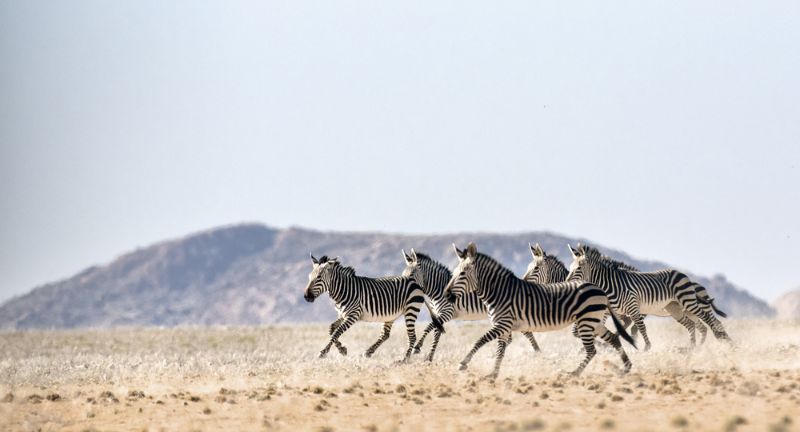
Shutterstock
The Grevy’s zebra has remarkable adaptations that allow it to survive in arid environments. It can go for days without water, thanks to its efficient hydration management. These zebras are often found near water sources but are capable of enduring extreme desert temperatures. Their dietary flexibility also helps them survive when grass is scarce.
Oldest Fossils
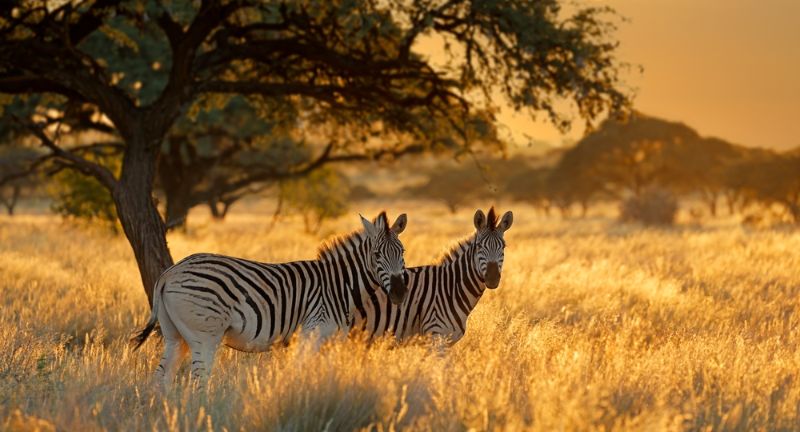
Shutterstock
Fossils indicate that zebras have been around for approximately two million years. These ancient ancestors were part of the equine family, which also includes horses and donkeys. Paleontologists have uncovered zebra fossils across Africa, providing insight into their evolutionary journey. The longevity of their lineage reflects the species’ adaptability to diverse environments.
Teeth for Grazing
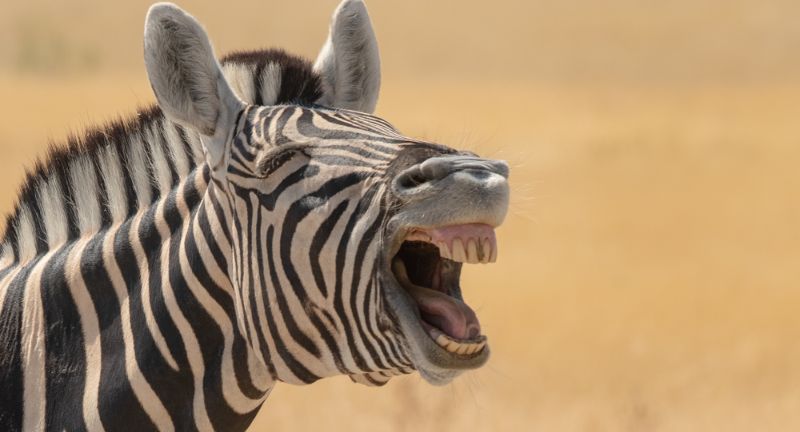
Shutterstock
Zebras have teeth that are perfectly designed for grazing on tough grasses. Their incisors clip the grass, while molars grind it into smaller pieces for digestion. As zebras spend much of their day grazing, their teeth continue to grow throughout their lives to counteract wear and tear. This dental adaptation ensures they can maintain their plant-based diet efficiently.
Popular Symbol
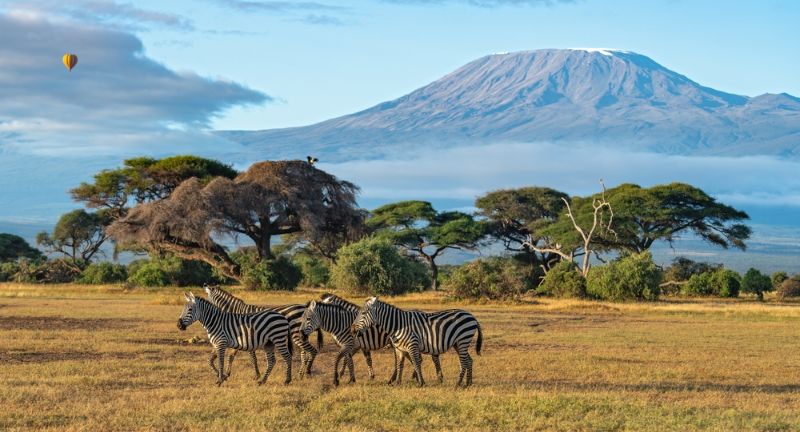
Shutterstock
Zebras have become popular symbols of individuality due to their one-of-a-kind stripe patterns. In various African cultures, zebras represent balance and harmony, reflecting the coexistence of contrasting colors. The zebra has also gained recognition in modern culture as a symbol of resilience and natural beauty. From logos to artwork, their striking patterns are widely appreciated across the world.
Conclusion
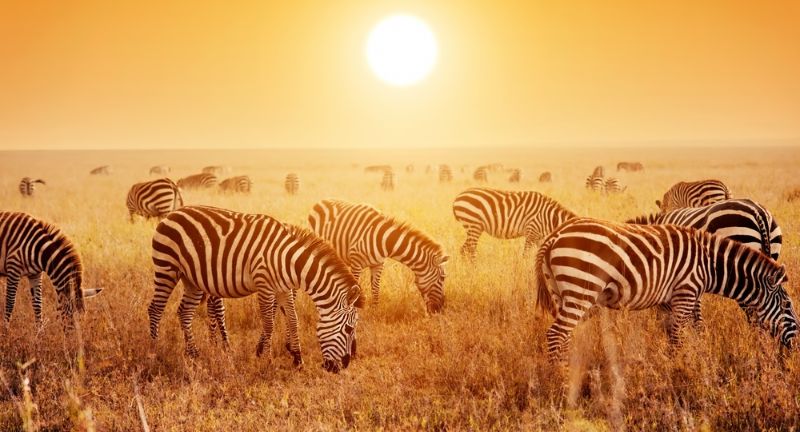
Shutterstock
Zebras are more than just animals with striking stripes—they are resilient, social, and uniquely adapted creatures that play a vital role in their ecosystems. From their powerful kicks to their impressive memory and migratory patterns, these animals have evolved with remarkable survival skills. Their distinctive black-and-white coats serve purposes far beyond beauty, offering protection and comfort in the harsh African environment. As human activity continues to impact zebra populations, understanding and appreciating these animals becomes even more essential. We hope these 25 fascinating facts have deepened your admiration for zebras and the incredible diversity of the natural world.
More Amazing Animals+
-
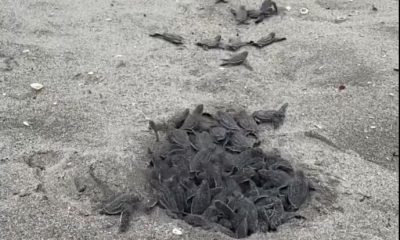

Leatherback Turtle Hatchlings in Juno Beach, Florida
-


Vitakraft’s Squeezable, Hand-Fed Snacks Named Best Cat Treat of 2022
-


28 Animals That Use Camouflage For Protection
-


19 Strange Creatures Named After Food You’ve Never Heard Of
-


Mr. Butts the Pug Attempts to Skateboard
-
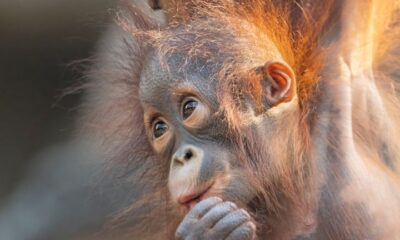

20 Irresistibly Cute Baby Orangutans And Fun Facts About Them
-
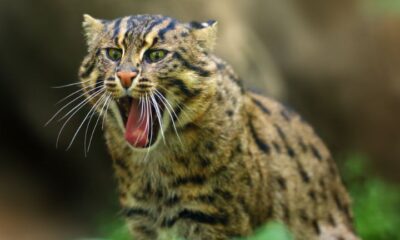

27 Animals With The Most Elaborate Hunting Strategies
-


Triple otter on the rocks
-


Danish Royal Life Guards escort duck family to Copenhagen harbor
-


29 Myths About Penguins That Just Aren’t True
-


Today a 12 foot Great White shark was spotted less…
-


Four bear cubs play while mama searches for them
